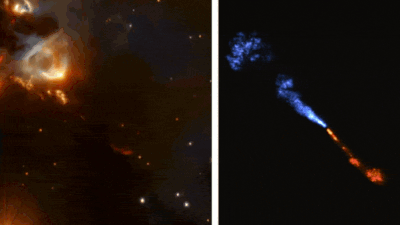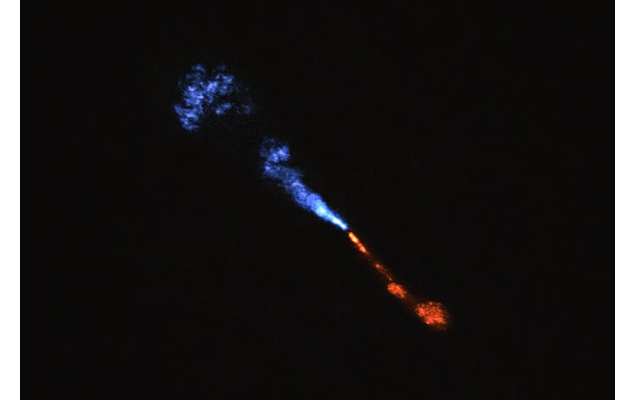Birth of planet captured: Astronomers share rare glimpses of newborn planet about 1,300 light-yrs away – watch |

For the first time, a team of researchers has captured the birth of a planet around a star beyond our Sun. The observations captured the very beginnings of planet formation, a rare glimpse into the cosmic process that gives rise to Earth-like planets around a star.Observations were made using the Atacama Large Millimeter/submillimeter Array (ALMA) telescope and NASA’s James Webb Space Telescope to capture the formation of a new planetary system. Scientists detected the formation of the first specks of planet-building material around a baby star named HOPS-315, located about 1,300 light-years away. HOPS-315 is considered a ‘proto-star’, meaning it’s in the earliest stage of stellar evolution. These young stars are often surrounded by protoplanetary discs – rotating clouds of gas and dust where planets are born.

This image shows jets of silicon monoxide (SiO) blowing away from the baby star HOPS-315. (Pic credit: ALMA(ESO/NAOJ/NRAO)/M. McClure et al.)
“For the first time, we have identified the earliest moment when planet formation is initiated around a star other than our Sun,” said Melissa McClure, lead author of the study from Leiden University in the Netherlands. The findings were published in the journal Nature.The team found evidence of silicon monoxide (SiO) gas and solid crystalline minerals in the disc surrounding HOPS-315. This suggests that planet-forming materials are beginning to condense from gas into solid particles, an evolutionary phase in the birth of planets.“This process has never been seen before in a protoplanetary disc — or anywhere outside our Solar System,” said Edwin Bergin, co-author and professor at the University of Michigan, USA.The discovery unveils a never-before-seen phase in planet formation and opens a new window into studying how planetary systems like our own come into being.





